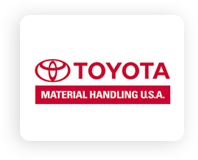Investing in a loading dock ramp is a crucial decision for any business seeking to streamline its shipping and receiving processes. However, the array of options available can often leave decision-makers feeling overwhelmed. Fear not, as Medlin Ramps is here to guide you through the selection process and help you find the perfect ramp for your facility’s needs.
Choosing Between Access Ramps and Yard Ramps
The two primary types of loading dock ramps are access ramps (stationary) and yard ramps (mobile). Selecting the right ramp hinges on factors such as your loading/docking area layout and operational requirements.
Yard Ramps: Versatile and practical, yard ramps feature heavy-duty wheels, allowing for easy mobility with a forklift. Ideal for businesses needing rapid loading dock solutions in various locations, yard ramps offer unmatched flexibility and convenience.
Access Ramps: Stationary by design, access ramps are bolted to the ground upon installation. Suited for ground-to-dock applications where ramp relocation is unnecessary, access ramps provide a stable and permanent solution for specific loading dock configurations.
Prioritizing Quality Over Price
While cost-effectiveness is undoubtedly a consideration, prioritizing quality over price is paramount when investing in a loading dock ramp. Given the rigorous demands and longevity expected from these ramps, product quality directly correlates with the durability and reliability of your investment.
Steel Construction: Opt for loading dock ramps constructed from high-quality steel, preferably sourced from the USA. Robust steel construction ensures longevity and durability, capable of withstanding the rigors of heavy lifting and continual use.
Support Channel Size: The size of support channels directly influences the ramp’s weight capacity. Thicker channels equate to higher weight-bearing capabilities, ensuring the ramp’s structural integrity under heavy loads.
Steel Supports: Adequate spacing between supports beneath the serrated grating promotes even weight distribution, enhancing the ramp’s stability and load-bearing capacity.
Serrated Grating Thickness: Invest in loading dock ramps featuring thick serrated grating made from high-quality steel. Thicker grating maximizes weight capacity and durability, ensuring long-term performance and safety.
Attachments: Confirm that essential attachments, such as safety chains and forklift attachments, are included with your loading dock ramp to enhance safety and functionality.
Manual vs. Hydraulic Lift: For mobile yard ramps requiring elevation adjustment, opt for models equipped with manual lifts for reliability and long-term operation.
Conclusion
In conclusion, Medlin Ramps emphasizes the importance of selecting the right loading dock ramp for your facility’s unique requirements. By prioritizing quality, considering operational needs, and understanding the differences between access and yard ramps, businesses can make informed decisions that optimize efficiency and productivity in their shipping and receiving operations. Trust in Medlin Ramps to provide high-quality loading dock ramps tailored to your specific needs, ensuring seamless operations and long-term reliability.












